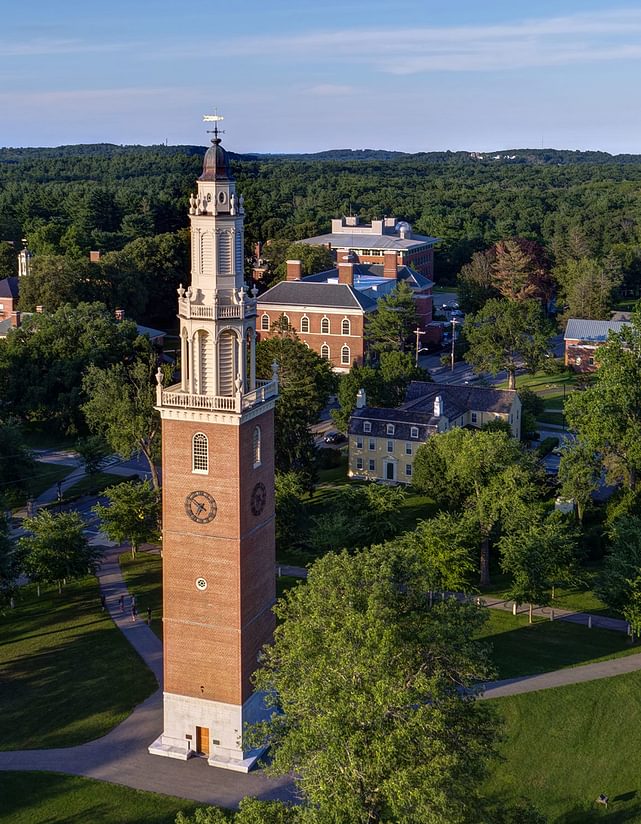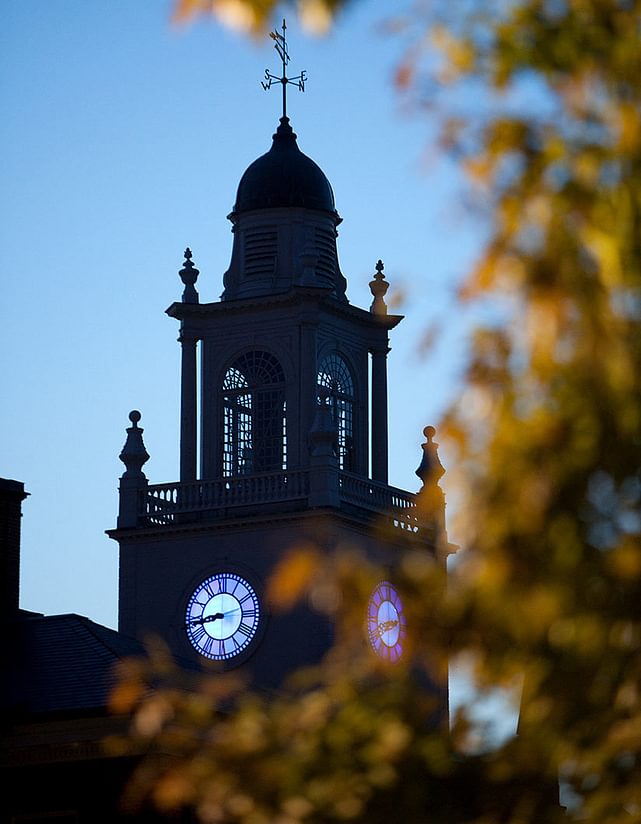
April 22, 2020
Youthful energy and environmental action
Memories of Andover 50 years ago and the student work around the first Earth Day in April of 1970by Jameson French ’71
Many of us have been moved and inspired by the passion and boldness of Greta Thunberg and other youth climate activists. Their energy and determination give me some measure of hope that actions can be taken to avert or at least lessen the global climate crisis we are facing.
This youthful enthusiasm brings back memories of Andover 50 years ago and the work that a group of us did in the months before and after the first Earth Day in April of 1970.
We were supported and encouraged by a group of community members—including many who were connected with the town’s Andover Village Improvement Society (AVIS)—like my father, Bob French; Juliet Kellogg; Phebe Miner; and Andy Rogers as well as our faculty advisors Tom Cone and George Sanborn ’24, both biology teachers.

For those of you who remain pessimistic about the current situation, it may be helpful to remember how awful things were in 1970. The Merrimack River was one of the 10 most polluted rivers in the country, with raw sewage from Andover and other towns being pumped directly into it. DDT, DDD, chlordane, toxaphene, and the herbicides 2,4-D and 2,4,5-T (the active ingredients in Agent Orange) were still in wide use and available on local hardware store shelves. We regularly collected dead robins and other birds from the PA campus and elsewhere in town when the elms were sprayed for Dutch Elm beetles or there was “fogging” for mosquito outbreaks. There were no recycling or returnable bottles, and the Andover dump was filling up. The Shawsheen River was a trash dump in many places, and there was hospital waste flowing into the Spicket River near where it fed into the Merrimack. The PA rowing team was clearly instructed that if they fell into the river during practice they were to report immediately to the infirmary for typhoid and diphtheria shots.
Despite this grim backdrop, a lot was accomplished in 1970. The Andover Bulletin published an article in the November issue written by myself and Andrew Reding ’70. The two of us were cochairs of the Natural History Club, which eventually evolved into Andover Ecology Action. Other 1971 classmates who were deeply involved included Link Smith, Andy Williams, and Carl Dines. Link, who is still a good friend, was a key player not only for his scientific mind, but also because his grandfather, Sumner Smith was a PA trustee emeritus, and an avid conservationist who helped convince the school administration that our group should be listened to.
The headline of the article was “Town and Gown Cooperate: Ecological Progress in Andover” and our story reported on the campus and community efforts to stop the sale and use of the “deadly nine” pesticides in Andover.
The Generation Gap was narrowed through a belief in environmental preservation.
”The PA administration was very cooperative and switched to a reduced spray and sanitation program on the elms; they also stopped campus use of all the listed pesticides and herbicides. With the help of other high school students, AVIS leaders, and the town’s Conservation Commission, we developed a petition that was signed by 596 registered voters requesting that store owners—including the Demoulas family, owners of the Market Basket grocery store chain—remove these destructive chemicals from their shelves. Amazingly, they agreed!
Before the first Earth Day there was a series of meetings (one attracted more than 200 participants) to organize a town-wide cleanup and institute a paper recycling program at the town dump. Andy Rogers spearheaded KAN (Keep Andover Neat), and canvas bags were distributed widely. On Earth Day, more than 400 students joined in and collected trash; the pile stood more than 12 feet high in the parking lot in front of the Andover Bookstore on Main Street. It took eight dump truck loads to take all of that trash to what was now called the landfill area. There was also a special effort, led by PA math teacher Nat Smith, to clean up the Shawsheen River. I remember helping to haul at least two refrigerators and a dozen tires from its banks.
Most of us were 16 or 17 at the time—naïve, but passionate and enthusiastic. We were nurtured, counseled, and supported by adult conservationists, including those at Phillips Academy and members of AVIS.
The story in the Andover Bulletin ends with: “The Generation Gap was narrowed through a belief in environmental preservation.” This sentiment still rings true today.
Jameson French ’71 has continued with a lifetime of environmental activism—especially around forest and land conservation. He chaired the U.S. board of the Forest Stewardship Council and the Society for the Protection of New Hampshire Forests and previously served on the boards of NH Audubon and the New Hampshire chapter of The Nature Conservancy. French is currently chair of the D.C.-based Land Trust Alliance, vice chair of the American Forest Foundation, and vice chair of the National Wildlife Federation Action Fund. He is president of Northland Forest Products and lives with his wife and family in Portsmouth, NH.
Hero image: Courtesy photo. Students stand on top of a 12-foot-tall mound of trash collected in Andover on Earth Day 1970.





